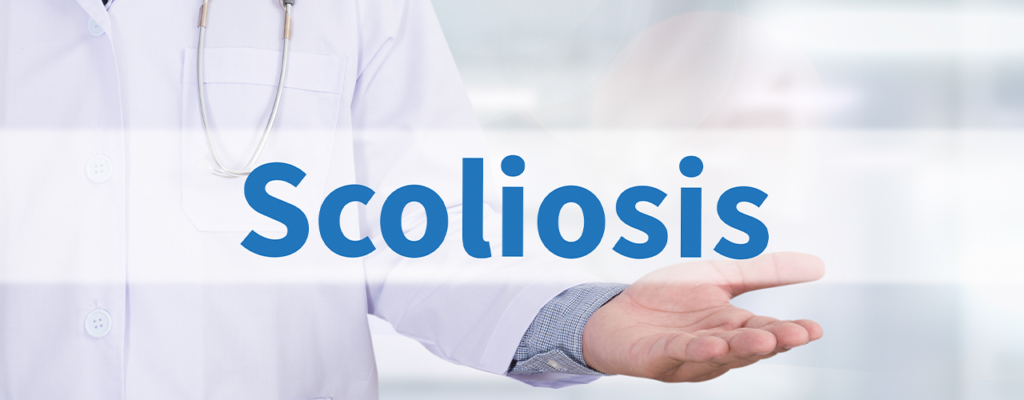What is Scoliosis?

In layman’s terms, scoliosis is the abnormal sideways curvature or rotation of the spine. Any curve, lateral or rotational greater than ten degrees, is considered scoliosis. As the curve progresses to 20 degrees or beyond, there is an increased chance that the person or an observer, such as a parent or teacher, might notice abnormalities such as clothes hanging unevenly or the body tilting to one side. The anatomy of the spine has “normal” curves in different regions to allow for proper movement mechanics and the absorption of force; however, once those curves become excessive and/or create pain in additional areas, it becomes an anatomical concern.
For reference, the neck region of the spine has a natural inward “C” shaped curve that holds the head up. With the neck’s natural curve, the head feels like 10 to 12 pounds; however, with a two-inch forward shift, the head could feel as though it weighs up to 30 pounds. In addition to the neck region, scoliosis can occur in the mid back (thoracic) and low back (lumbar) regions. One would typically see “kyphosis,” a rounded back in the mid back.
When is Scoliosis Diagnosed?
Scoliosis can be diagnosed at all ages, depending on the type. Eighty percent of all “spontaneous” scoliosis cases happen between the ages of 10 to 18 years old as the body goes through many structural changes and new movement patterns. Common signs and symptoms of scoliosis include:
- Clothes fit awkwardly or hang unevenly.
- Lateral curvature observed while in a bathing suit or changing.
- Pain on one side.
- Muscle imbalances and spasms.
- Muscle imbalances and spasms.
- Obvious deformity.
Although scoliosis diagnoses occur in the adolescent years, it is infrequent that those diagnosed suffer from severe effects. Those closer to 20 degrees or above curvatures can be referred to physical therapy to help correct the muscle imbalances, increase range of motion and mobility, and re-train movements to create more symmetry throughout the body. In addition to therapy, patients can use a brace to stop the shifting of the spine. Bracing can consist of full-time or nighttime bracing, but both require the patient to wear it for extended hours at a time. When bracing does not work and the curvature is steadily growing, surgery is a last resort option in which surgeons place rods along the spine or fuse the spine to stop the deformity.
How Can Physical Therapy Help?
At Comprehensive Physical Therapy, we do a thorough evaluation with our physical therapists. They locate the curvature of rotation and any muscle imbalances and create a personalized plan to increase the symmetry throughout the body. In addition to that, we also look to create more functional movement patterns that are trainable.
Your Next Steps…
Schedule An Appointment
Receive A Custom Treatment Plan
Work Hard and Progress In Your Recovery
Recover & Enjoy Life Pain-Free!
